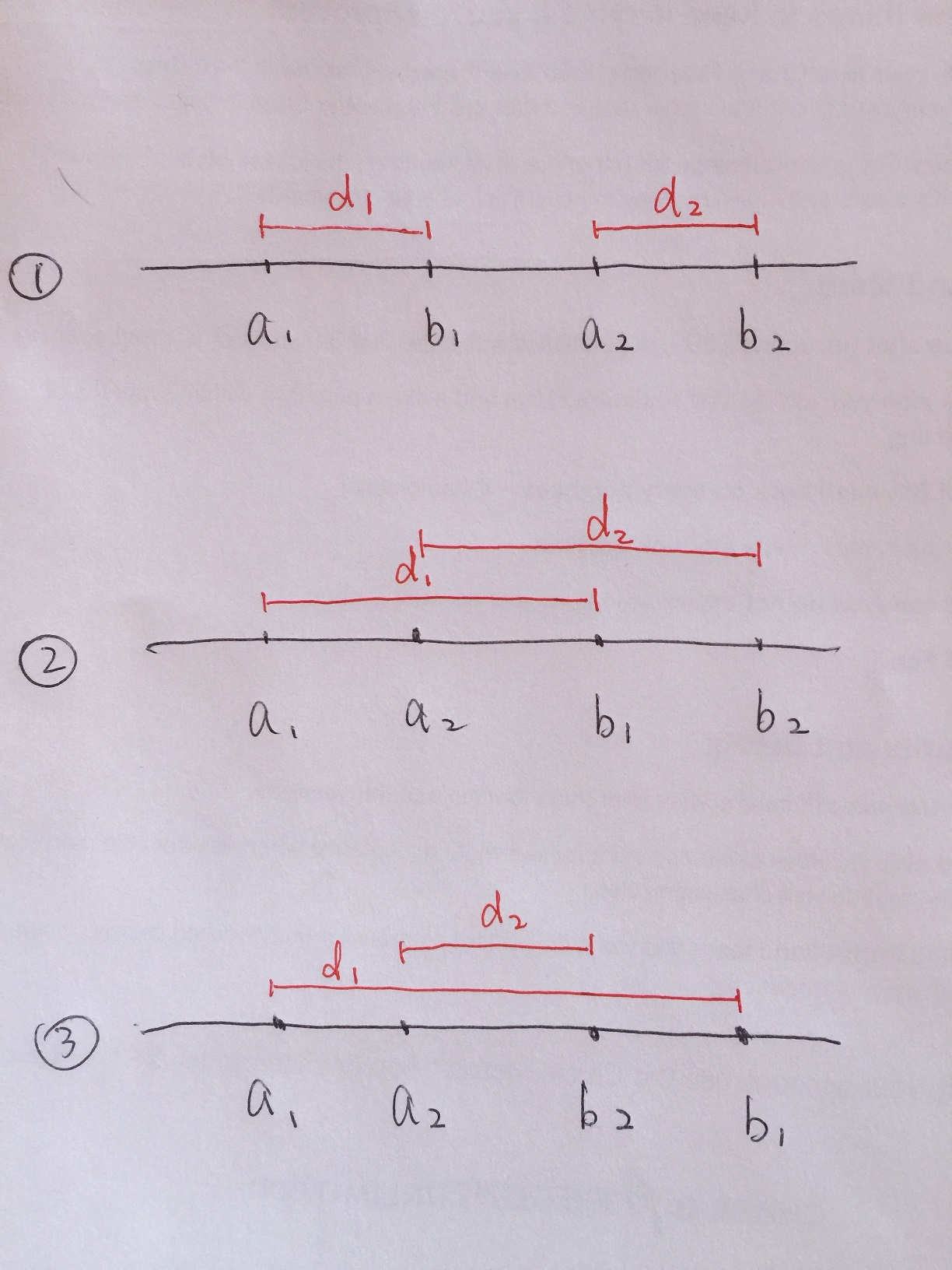561. Array Partition I【easy】
阿新 • • 發佈:2017-10-03
cas positive output not big ren emp let malle
561. Array Partition I【easy】
Given an array of 2n integers, your task is to group these integers into n pairs of integer, say (a1, b1), (a2, b2), ..., (an, bn) which makes sum of min(ai, bi) for all i from 1 to n as large as possible.
Example 1:
Input: [1,4,3,2] Output: 4 Explanation: n is 2, and the maximum sum of pairs is 4 = min(1, 2) + min(3, 4).
Note:
- n is a positive integer, which is in the range of [1, 10000].
- All the integers in the array will be in the range of [-10000, 10000].
解法一:
1 class Solution { 2 public: 3 int arrayPairSum(vector<int>& nums) { 4 if (nums.empty()) { 5 return 0; 6 }7 8 sort(nums.begin(), nums.end()); 9 10 int sum = 0; 11 for (int i = 0; i < nums.size(); i += 2) { 12 sum += nums[i]; 13 } 14 15 return sum; 16 } 17 };
為了不浪費元素,先排序,這樣可以保證min加出來為max
比如[1, 9, 2, 4, 6, 8]
如果按順序來的話,1和9就取1,2和4就取2,6和8就取6,顯而易見並不是最大,原因就是9在和1比較的時候被浪費了,9一旦浪費就把8也給影響了,所以要先排序
@shawngao 引入了數學證明的方法,如下:
Let me try to prove the algorithm...
- Assume in each pair
i,bi >= ai. - Denote
Sm = min(a1, b1) + min(a2, b2) + ... + min(an, bn). The biggestSmis the answer of this problem. Given1,Sm = a1 + a2 + ... + an. - Denote
Sa = a1 + b1 + a2 + b2 + ... + an + bn.Sais constant for a given input. - Denote
di = |ai - bi|. Given1,di = bi - ai. DenoteSd = d1 + d2 + ... + dn. - So
Sa = a1 + a1 + d1 + a2 + a2 + d2 + ... + an + an + di = 2Sm + Sd=>Sm = (Sa - Sd) / 2. To get the maxSm, givenSais constant, we need to makeSdas small as possible. - So this problem becomes finding pairs in an array that makes sum of
di(distance betweenaiandbi) as small as possible. Apparently, sum of these distances of adjacent elements is the smallest. If that‘s not intuitive enough, see attached picture. Case 1 has the smallestSd.

561. Array Partition I【easy】
